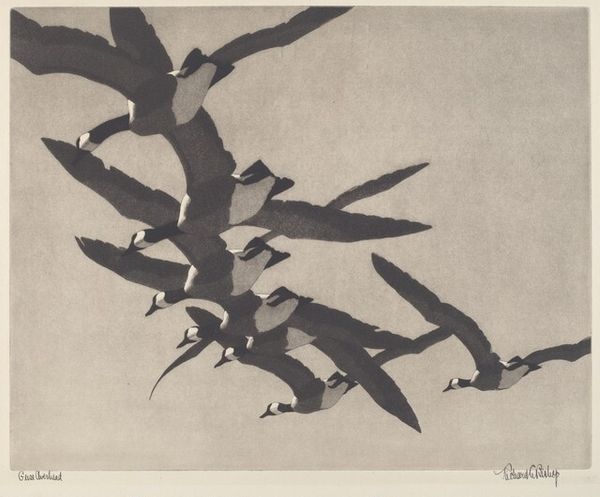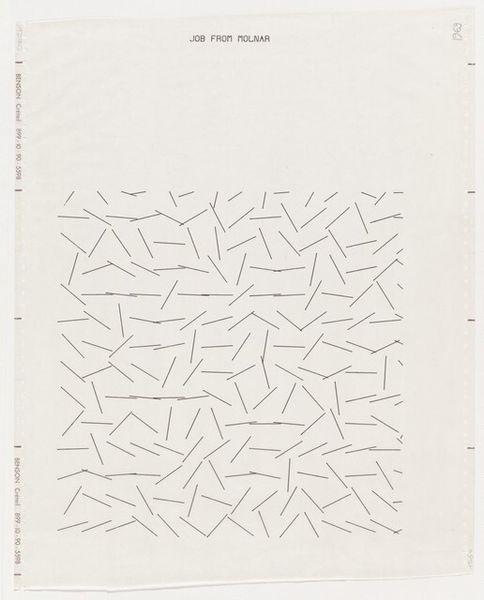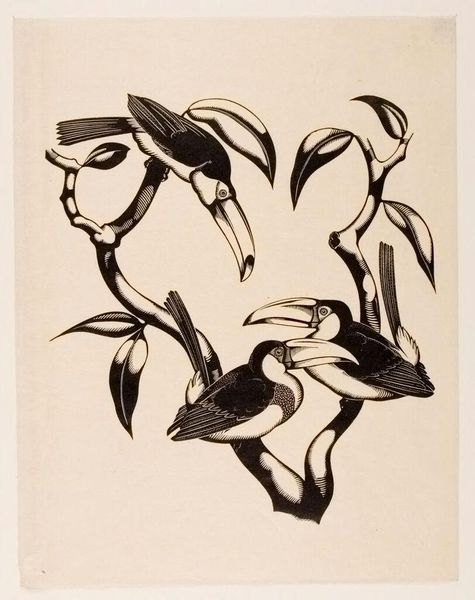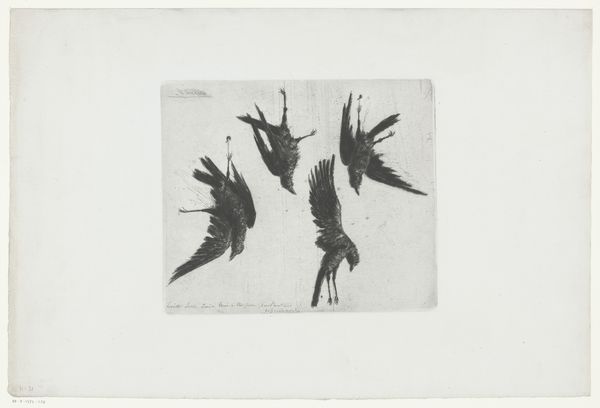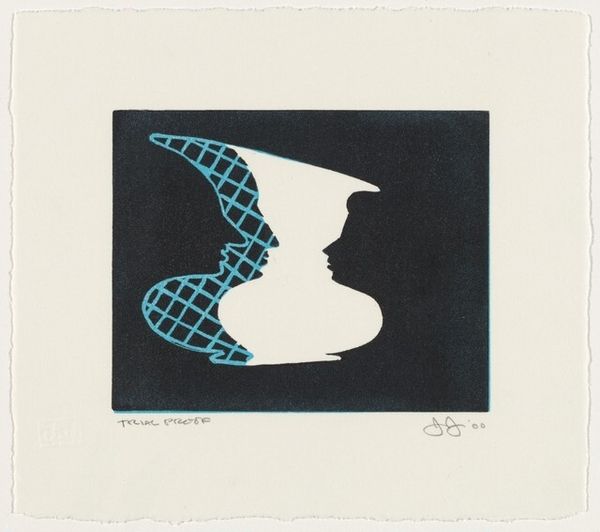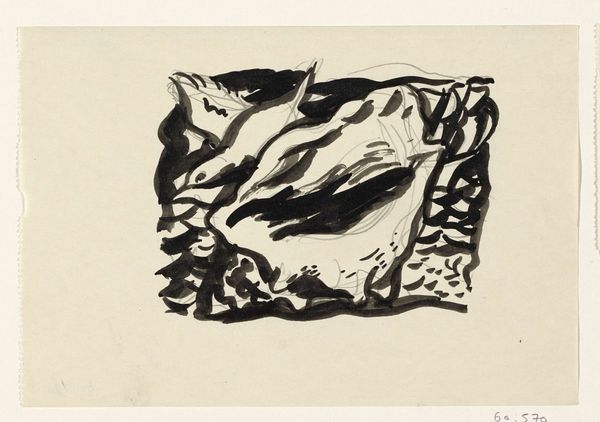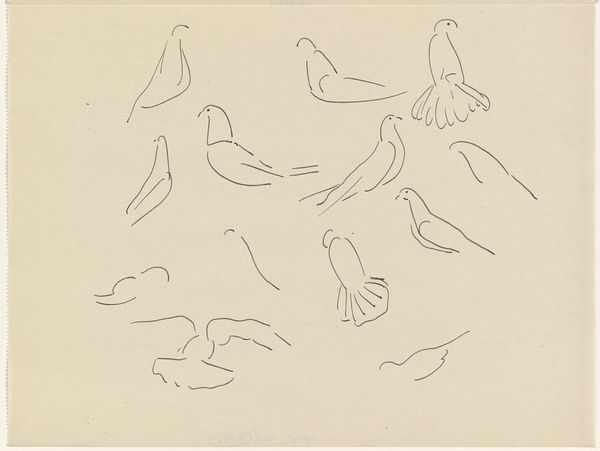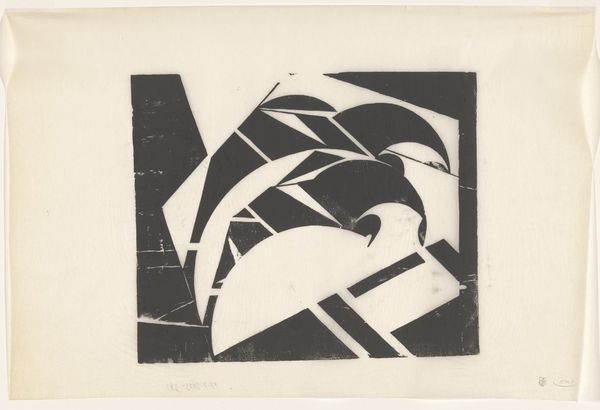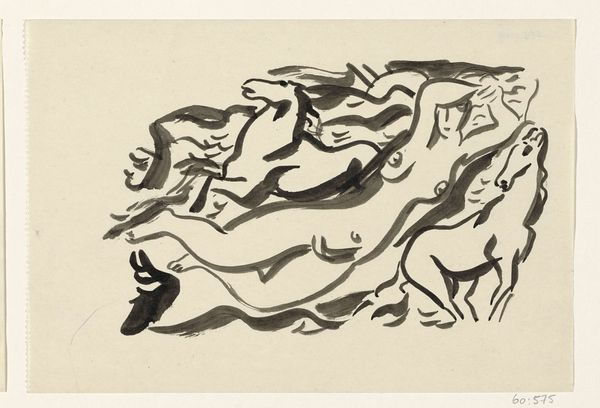
print, linocut
#
linocut
# print
#
linocut
#
linocut print
#
geometric
#
abstraction
#
modernism
Copyright: National Gallery of Art: CC0 1.0
Curator: This linocut print, entitled "Sun and Moon," was crafted by M.C. Escher in 1948. Its visual organization certainly makes quite an impact, doesn't it? Editor: It does. I'm struck by the immediate contrast; the duality implied by the work's title. But beyond the high contrast between black and white shapes, I see rigid, tessellated forms. What appears organic quickly reveals itself as controlled geometry. Curator: Precisely. Escher was masterful in manipulating form. Let's consider how he uses tessellation here: black and white birds interlock, each perfectly filling the void left by the other, generating a seamless pattern across the picture plane. Consider also how positive and negative space interact. Editor: It’s a binary opposition visually expressed. I am also thinking about how these interlocking shapes perhaps mimic the societal norms after World War II, as the world was sharply divided along ideological lines and complex issues were presented in black and white terms. This division permeated public discourse, marginalizing nuanced perspectives. Curator: An interesting perspective. The modernist style, with its lean lines, creates a strong interplay, almost an argument between order and perceived chaos. The balance of elements draws my eye into the center, then pushes it back out in a continuous cycle. Editor: And if we continue thinking about societal contexts of this time, we could argue that it echoes Existentialist philosophy of the post-war era. A period in which individuals sought purpose in the face of absurdity. This abstraction reminds me of a world still grappling with reality. Are we the sun or the moon? What should be be? Curator: These questions linger. This piece demonstrates an awareness of our impulse to bring form from chaos. We seek recognizable elements within a pattern. The constant shifting between figure and ground demands attention. Editor: Well, on that note, it speaks volumes about a period marked by transitions—artistic, political, and societal—challenging our perception of reality itself. Curator: An engaging discourse; thank you.
Comments
No comments
Be the first to comment and join the conversation on the ultimate creative platform.
